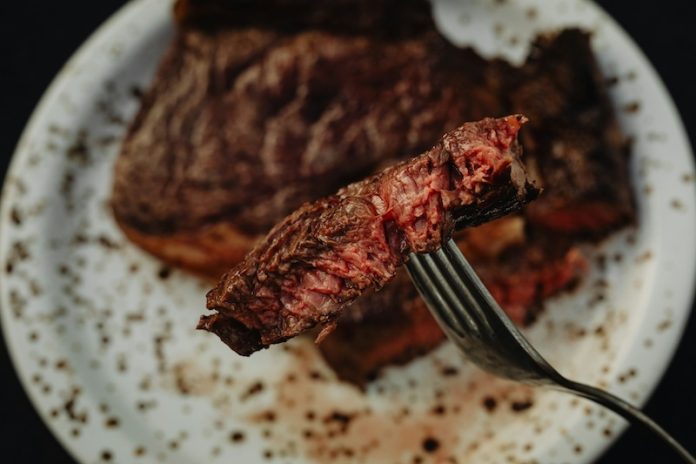
When you have high blood pressure (hypertension) or diabetes, what you eat can significantly impact your health. Both conditions are deeply influenced by dietary choices, and certain foods can worsen the risks associated with these health issues.
This guide will outline the foods you should avoid to help manage high blood pressure, diabetes, or both, using straightforward language and evidence-backed advice.
Understanding High Blood Pressure and Diabetes
High blood pressure occurs when the force of blood against the walls of your arteries is consistently too strong. This can strain your heart and lead to serious health problems like heart disease and stroke.
Diabetes, on the other hand, is marked by high blood sugar levels because the body either doesn’t produce enough insulin or doesn’t use it effectively. Although these are different conditions, they share common risk factors and can be managed through similar dietary strategies.
The Role of Salt (Sodium)
One of the biggest dietary culprits for both high blood pressure and diabetes is salt, or sodium. Excessive salt intake can raise blood pressure by causing the body to retain extra fluid, which adds stress to the heart and blood vessels.
The American Heart Association recommends limiting sodium intake to no more than 2,300 milligrams per day, with an ideal limit of 1,500 milligrams for most adults, particularly those with high blood pressure.
High-sodium foods to avoid include:
- Processed foods like deli meats, canned soups, and fast food
- Snacks like chips and pretzels
- Certain condiments and sauces
Reading food labels can help you keep track of sodium content and avoid these high-salt foods.
Managing Sugar Intake
For those with diabetes, controlling sugar intake is crucial to maintaining healthy blood sugar levels. But sugar isn’t just a concern for diabetics; it can also affect blood pressure.
Consuming too much sugar, especially from sugary drinks like sodas, juices, and energy drinks, can lead to weight gain, which is a risk factor for both high blood pressure and diabetes.
To manage sugar intake, it’s wise to:
- Avoid sugary drinks and opt for water, unsweetened tea, or coffee
- Limit sweets and desserts
- Be cautious of hidden sugars in processed foods
Additionally, high consumption of refined sugars and carbohydrates can increase the risk of developing type 2 diabetes and make it harder to manage existing diabetes.
Understanding Fats
Not all fats are created equal. Trans fats and saturated fats are particularly harmful because they can worsen insulin resistance (making it harder to control blood sugar) and increase blood pressure. These unhealthy fats are often found in:
- Fried foods
- Baked goods like pastries, cookies, and cakes
- Foods made with hydrogenated oils
Instead of these, focus on incorporating healthy fats into your diet, such as:
- Avocados
- Nuts and seeds
- Olive oil
These healthy fats can improve cholesterol levels and support better insulin sensitivity.
Choosing the Right Proteins
Red meat and full-fat dairy products are other food items to be cautious with. They are high in saturated fats, which can raise bad cholesterol levels and negatively affect both blood pressure and blood sugar control. It’s better to opt for leaner protein sources, such as:
- Chicken or turkey without the skin
- Fish, especially fatty fish like salmon, which is rich in omega-3 fatty acids
- Plant-based proteins like beans, lentils, and tofu
These options provide necessary protein without the added risks associated with red meat and full-fat dairy.
Alcohol in Moderation
Alcohol can affect both blood pressure and blood sugar levels, so moderation is key. Drinking too much alcohol can raise blood pressure and make it harder for blood pressure medications to work effectively. For people with diabetes, alcohol can lead to unpredictable blood sugar levels—sometimes too high, other times dangerously low.
General guidelines suggest:
- Limiting alcohol to one drink per day for women and two drinks per day for men
- Always consuming alcohol with food to help stabilize blood sugar levels
Choosing Whole Grains Over Refined Grains
Refined grains like white bread, white rice, and regular pasta should be limited because they have a high glycemic index. This means they can cause your blood sugar to spike quickly after eating. Whole grains, which are digested more slowly and provide more nutrients, are a better choice. These include:
- Whole wheat bread
- Brown rice
- Oats
- Quinoa
Whole grains help keep blood sugar levels steady, which is crucial for managing diabetes.
Conclusion
Managing high blood pressure and diabetes involves making thoughtful choices about what you eat. Avoiding foods high in salt, sugar, unhealthy fats, and refined grains can make a big difference in controlling these conditions.
Instead, focus on a diet rich in whole grains, lean proteins, healthy fats, and low in processed foods. These changes not only help manage high blood pressure and diabetes but also contribute to overall better health.
Remember, making these dietary adjustments is about more than just avoiding certain foods—it’s about building a healthier lifestyle. Regular consultations with healthcare providers and a nutritionist can provide additional personalized guidance and support to help you manage your health effectively.
If you care about diabetes, please read studies about 5 vitamins that may prevent complication in diabetes, and how to manage high blood pressure and diabetes with healthy foods.
For more health information, please see recent studies about vitamin D and type2 diabetes, and to people with type 2 diabetes, some fruits are better than others.
Copyright © 2024 Knowridge Science Report. All rights reserved.



